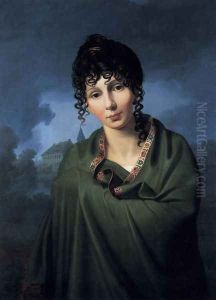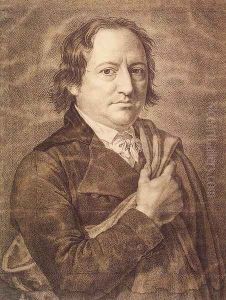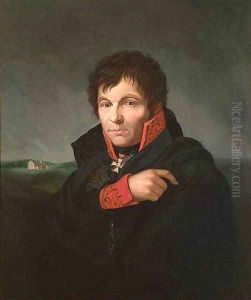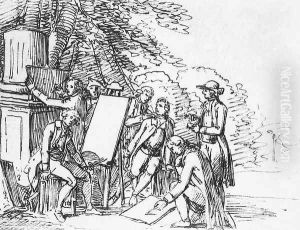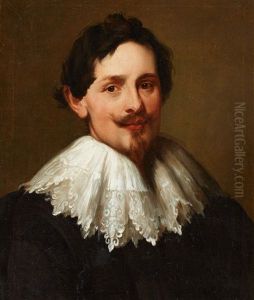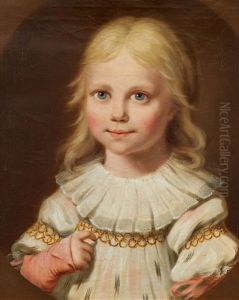Friedrich Bury Paintings
Friedrich Bury, born on March 13, 1763, in Hanau, Germany, was a notable German artist whose contributions to the art world spanned across drawing, painting, and engraving. His early life in Hanau, a city with a rich history of artistic and cultural development, provided him with a fertile ground for nurturing his artistic talents. Bury's artistic journey began under the guidance of his uncle, Johann Heinrich Tischbein, a prominent painter known for his portraits and historical subjects. This mentorship played a crucial role in shaping Bury's artistic direction and honed his skills in the classical style, which was prevalent during that period.
After his initial training, Bury's quest for artistic excellence led him to Rome in 1783, where he became part of the vibrant expatriate German artist community. Rome, with its ancient ruins, Renaissance masterpieces, and dynamic artistic scene, was the perfect backdrop for Bury's development as an artist. He immersed himself in the study of classical art and the works of contemporary artists, which significantly influenced his style and thematic preferences. During his time in Rome, Bury became closely associated with Johann Wolfgang von Goethe, a relationship that not only deepened his engagement with the intellectual currents of his time but also provided him with opportunities to explore various artistic commissions.
Bury's art is characterized by its classical grace, attention to detail, and a harmonious blend of colors. His portraits and historical paintings reflect a deep reverence for antiquity, a hallmark of the neoclassical movement that dominated European art in the late 18th and early 19th centuries. Despite being less known than some of his contemporaries, Bury's work was highly regarded by his peers, and he was a respected member of the artistic community in Rome and later in Germany.
Returning to Germany in the late 1790s, Friedrich Bury continued to work and contribute to the German art scene until his death on May 18, 1823, in Heidelberg. Throughout his career, he exhibited a profound dedication to the ideals of classical beauty, which remained a consistent theme in his artwork. Bury's legacy, while overshadowed by more famous artists of his era, remains significant for its contribution to the neoclassical tradition, offering valuable insights into the cultural and artistic exchanges between Germany and Italy during a pivotal period in European art history.
